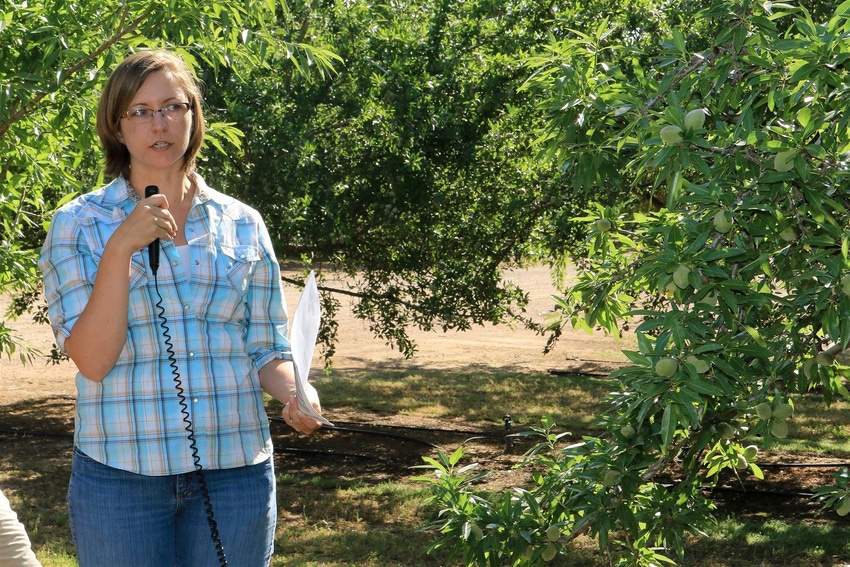
Almond growers planning their next (or first) orchard are encouraged to fully understand the site-specific soil and wind conditions before placing that nursery order.
Katherine Pope, orchard systems farm advisor with the University of California Cooperative Extension in Yolo, Solano and Sacramento counties, says trials conducted throughout the state suggest some bright spots for certain rootstocks under specific conditions.
Though some rootstocks did better, for instance, in soils with higher salt concentrations, none of those tested so far will provide a “one-size-fits-all” approach, and should therefore be considered on a case-by-case basis.
“There’s really no perfect rootstock,” she says.
Moreover, she warns that not all peach-almond hybrids can be judged the same.
Pope cautions growers to consider the limitations of any potential planting site and build the orchard around that.
She also cautioned growers not to get stuck on choosing the largest tree possible because “bigger isn’t always better.” She suggests that when planning for orchards with smaller trees to consider tightening up the tree spacing to improve yield per acre.
Pope listed 10 of the more popular rootstocks during a discussion on the topic at the Nickels Field Day near Arbuckle. Nickels is also the site of a research orchard that includes conventional and organic almonds.
Categories sampled include:
Anchorage – how well does the tree withstand leaning or potential “blow-over” situations?
High pH with heavy soils;
Shallow, gravel-laden soils;
Tolerance to high salt levels in the soil; and,
Tolerance to high boron levels in the soil.
For those looking to plant in areas where wind might be an issue, Viking and Krymsk-86 rootstocks appeared to perform best in potential blow-over situations.
Pope said a trial of fifth-leaf trees in Kern County in the late 1990s tested this theory when the site received two inches of rain in five hours and 80 mile per hour winds.
“This really tested the anchorage of the rootstock,” she said.
In that trial, the trees on Atlas rootstock did poorly but the Viking rootstock held up well, “which goes to show that even the same parents can make different siblings because both are complex hybrids,” she said.
For growers where heavy soils and high pH are a problem, Pope says this is can be a challenge for Sacramento Valley growers. The rootstocks Brights, Nickels, FxA, Atlas, and Rootpack R show the most promise from university trials.
In shallow soils, Hansen and Atlas showed the most promise, according to Pope.
Those who know they will be planting in soils high in salt or with similar water challenges may want to avoid Lovell, Brights, Atlas and Krymsk-86 and opt instead to plant on Hansen, Nickels, FxA or Rootpac R, she said.
A trial in the Durham area of Butte County – Pope cautions that these are fifth-leaf trees – seems to indicate that Atlas is doing well under those heavy soil conditions.
In Stanislaus County where high salt, boron and heavy soils are an issue, Brights, Rootpac R, FxA and Atlas stand out among the others, she said.
In San Joaquin County trials researchers found that the peach rootstocks – namely Lovell and Nemaguard – have very high salt content in their leaves, suggesting these are not doing a good job of keeping salts out of the tree.
Of the 10 rootstocks surveyed, Lovell showed the poorest results across the board. None of the rootstocks sampled did exceptionally well across all five categories, but they had situations where they did better.
Soils with high boron significantly challenged Lovell and Krymsk-86, while Nickels and FxA showed the most promise under those conditions. The remaining rootstock types each showed mixed results in their tolerance to high boron.
Pope pointed out that Marianna rootstock is the only documented root stock that is resistant to Phytophthora root rot.
About the Author(s)
You May Also Like






